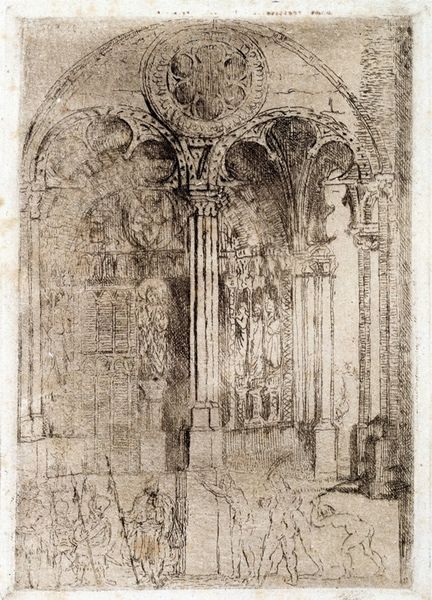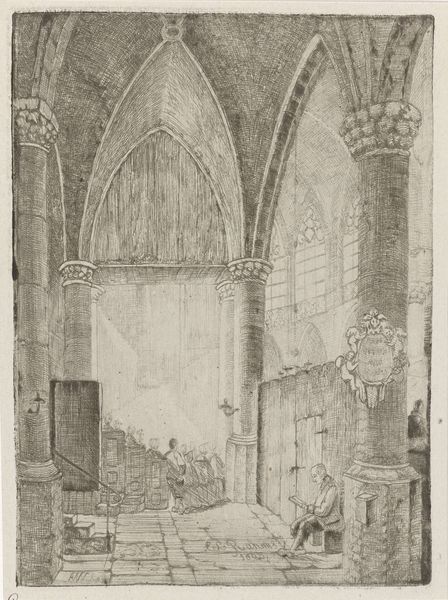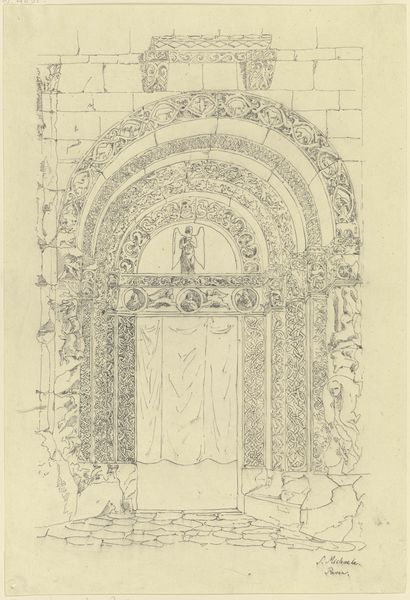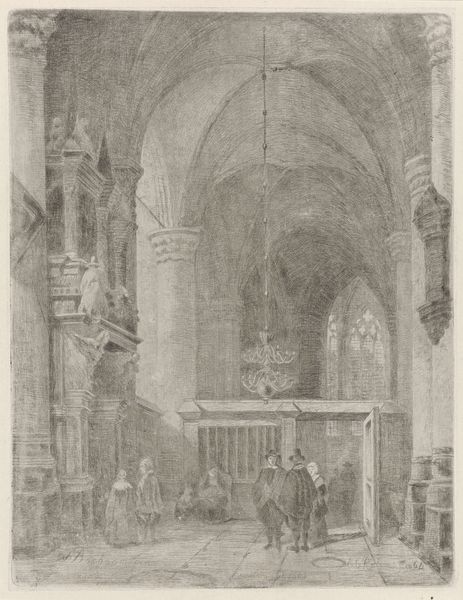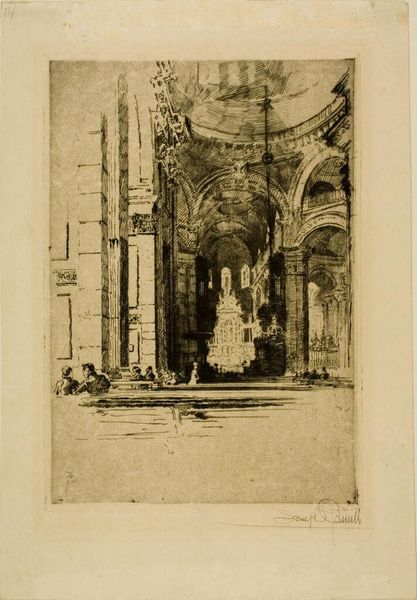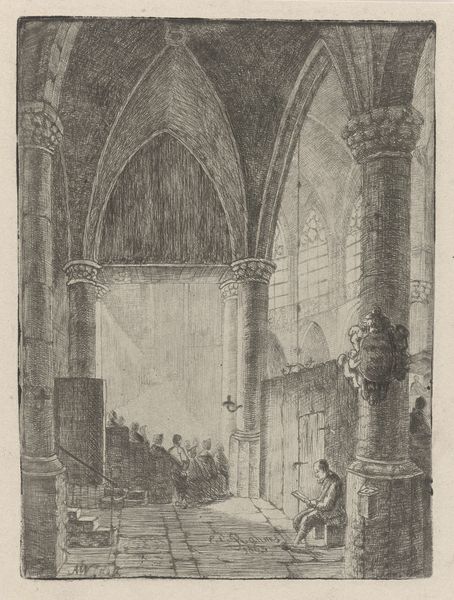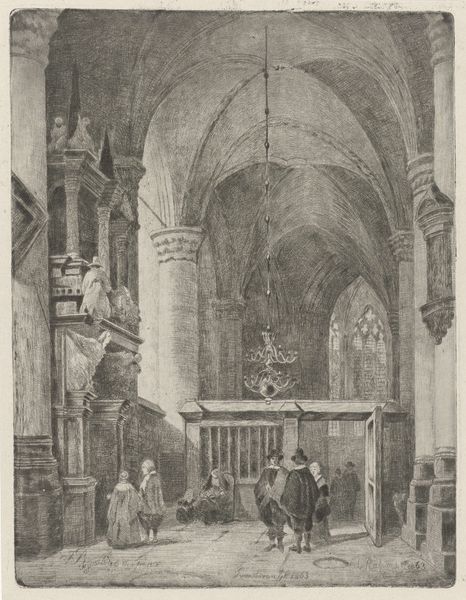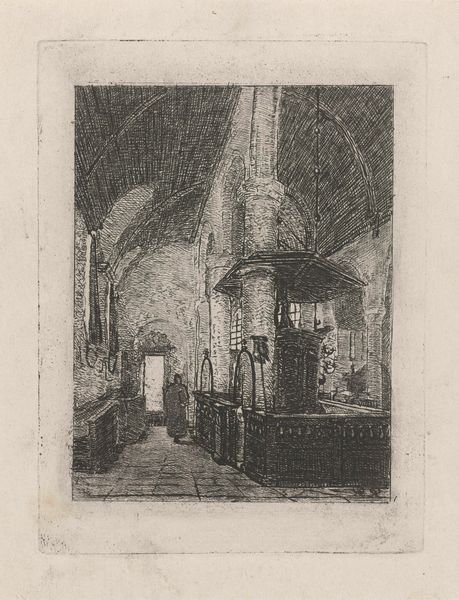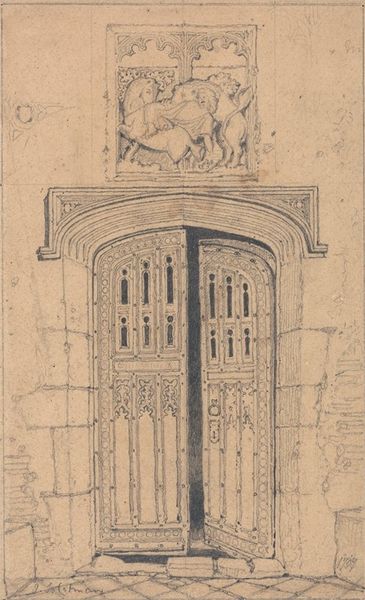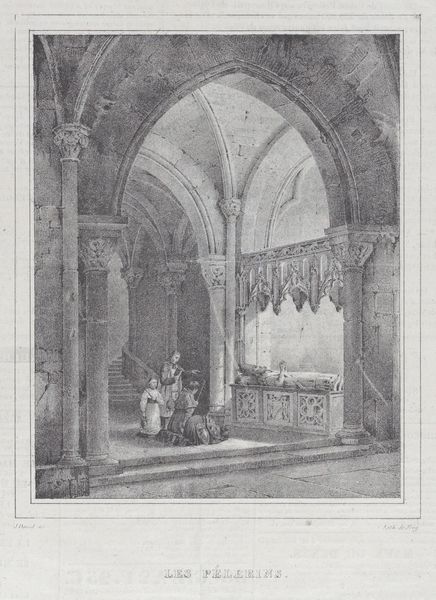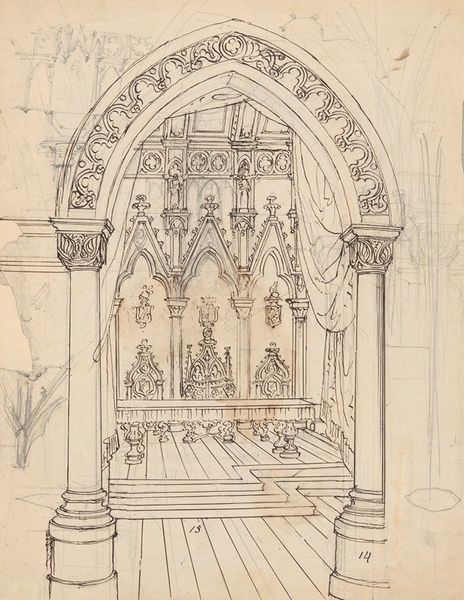
drawing, print, etching, engraving
#
drawing
#
medieval
# print
#
pen sketch
#
etching
#
pencil sketch
#
old engraving style
#
symbolism
#
engraving
Copyright: Public Domain: Artvee
Curator: James Ensor's 1886 etching, "De Geseling", roughly translated to "The Whipping," depicts a medieval architectural setting teeming with figures. Editor: It's like looking into a faded dream, all grey and wispy. The architecture looms, dominating the space, while the people are like agitated insects crawling around its base. Curator: Indeed, Ensor used etching and engraving techniques to create incredibly fine, dense lines, giving the image a sense of intricate detail and perhaps oppressive atmosphere. Think about the labor involved in producing such a detailed plate. Editor: I can’t help but see a potent critique of power dynamics in this work. The rigid structure in the background, likely meant to represent the church or some other form of established authority, casts a long, almost violent, shadow upon the writhing figures. There's a very obvious dichotomy set up between those who give orders versus those who take them. Curator: Absolutely. The architectural backdrop feels both timeless and incredibly specific. Medievalism experienced a strong revival in the 19th century, appearing in various art forms and drawing inspiration from pre-industrial crafts, and in turn influencing labor-intensive mediums like etching. Editor: This print reflects Ensor's concerns with injustice, as well as human suffering at the hands of seemingly immutable systems. This aligns so strongly with discussions surrounding class, societal structures, and, especially given the title, theological corruption that permeate so much historical and contemporary artistic discourse. Curator: It does open many perspectives for reinterpretation. Even in the material limitations—the monochromatic nature of printmaking itself—we see Ensor making choices. Each stroke of the etching needle was a physical act of resistance. Editor: You are so right; that’s part of why Ensor still resonates today, not just for the technical precision, but also because his commentary is sharp, cutting across eras. It leaves you questioning what structures imprison us now. Curator: Ultimately, it's in considering these layers of historical process and sociopolitical critique that we arrive at a deeper understanding of this compelling work. Editor: Yes, it really makes you consider the roles we all play in both perpetuating and fighting injustice and it prompts questions of moral complicity within overarching societal systems.
Comments
No comments
Be the first to comment and join the conversation on the ultimate creative platform.
